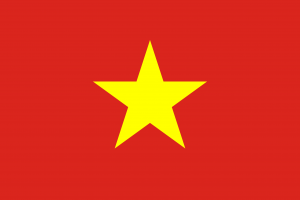Language/Vietnamese/Vocabulary/Modes-of-Transportation
 Հայերէն
Հայերէն Български език
Български език 官话
官话 官話
官話 Hrvatski jezik
Hrvatski jezik Český jazyk
Český jazyk Nederlands
Nederlands English
English Suomen kieli
Suomen kieli Français
Français Deutsch
Deutsch עברית
עברית हिन्दी
हिन्दी Magyar
Magyar Bahasa Indonesia
Bahasa Indonesia فارسی
فارسی Italiano
Italiano 日本語
日本語 Қазақ тілі
Қазақ тілі 한국어
한국어 Lietuvių kalba
Lietuvių kalba Νέα Ελληνικά
Νέα Ελληνικά Şimali Azərbaycanlılar
Şimali Azərbaycanlılar Język polski
Język polski Português
Português Limba Română
Limba Română Русский язык
Русский язык Српски
Српски Español
Español العربية القياسية
العربية القياسية Svenska
Svenska Wikang Tagalog
Wikang Tagalog தமிழ்
தமிழ் ภาษาไทย
ภาษาไทย Türkçe
Türkçe Українська мова
Українська мова Urdu
UrduAs a Vietnamese language teacher with more than 20 years of experience, I am excited to help you learn the Vietnamese vocabulary related to different modes of transportation in Vietnam. In this lesson, we will focus on the most common forms of transportation in the country, including their names, uses, and related vocabulary. By completing this lesson, you will become more confident in communicating your transportation needs in Vietnamese, whether you are asking for directions or simply chatting with locals. Let’s get started!
Types of Transportation
Vietnam is known for its unique and diverse modes of transportation. While many people are used to driving in cars or taking buses and trains, Vietnam has a wide range of traditional forms of transportation that are still in use today. Below are some of the most common types of transportation in Vietnam:
Motorbikes (Xe Máy)
Motorbikes are by far the most popular form of transportation in Vietnam, with over 45 million registered motorbikes in the country. They are a convenient and affordable way to navigate through congested cities and rural areas alike. Xe Máy literally translates to "machine bikes" in Vietnamese, and they are often referred to simply as "xe" for short. It is worth noting that helmets are required by law for both drivers and passengers.
Bicycles (Xe Đạp)
Before motorbikes became widespread in Vietnam, bicycles were the most common form of transportation. They are still used today, especially in rural areas where the terrain is more level. Xe Đạp is the Vietnamese term for bicycles, and they are commonly used for short trips and exercise.
Taxis (Xe Taxis)
In Vietnam, taxis are a popular choice, especially for travelers or those needing to travel more comfortably or over longer distances. Many taxi companies, both local and international, are available for customers to choose from. Taxis can be hailed on the street, or booked through an app on your smartphone. The Vietnamese word for taxi is Xe Taxi.
Buses (Xe Buýt)
Xe Buýt or buses are a common mode of transportation for locals and travelers in Vietnam. Many cities operate bus systems, and the fares are usually very affordable. However, it is not uncommon for buses to become crowded during peak hours, so be prepared to stand for the duration of your trip.
Trains (Xe Lửa)
Vietnam's railway system is extensive, and trains are an affordable and scenic way to travel long distances throughout the country. Lửa means fire in Vietnamese, and Xe Lửa translates to Fire Cars. Trains range from basic commuter trains to more luxurious options with sleeper cars, and they are generally well-maintained and comfortable.
Cyclos and Xích Lô (Xe Xích Lô)
Cyclos and Xích Lô are traditional forms of transportation in Vietnam. Cyclos are three-wheeled bicycles with a passenger seat attached to the front, and Xích Lôs are similar but have a larger passenger seat attached to the back of a bicycle. While they have become less common with the rise of motorbikes, they are still used in certain tourist areas and for short trips around cities.
Related Vocabulary
Below are some useful words and phrases that can help you better understand and communicate your transportation needs in Vietnamese:
| Vietnamese | Pronunciation | English |
|---|---|---|
| Xe | "se" | Vehicle |
| Đi | "dee" | Go |
| Đến | "den" | Arrive |
| Trái Phép | "try fehp" | Illegally |
| Lạng Lách | "lang-lach" | Weaving in and out (traffic) |
| Phạt | "fat" | Fine (traffic) |
| Bảo Hiểm | "bau hiem" | Insurance |
- Xe Máy: Motorbikes
- Có xe bus tới đó không?: Does the bus go there?
- Bảo Hiểm xe máy: Motorcycle insurance
- Đi đường này: Go down this road
- Đây là đường một chiều: This is a one-way street
Keep practicing, and you’ll soon be communicating like a local!
Sources

